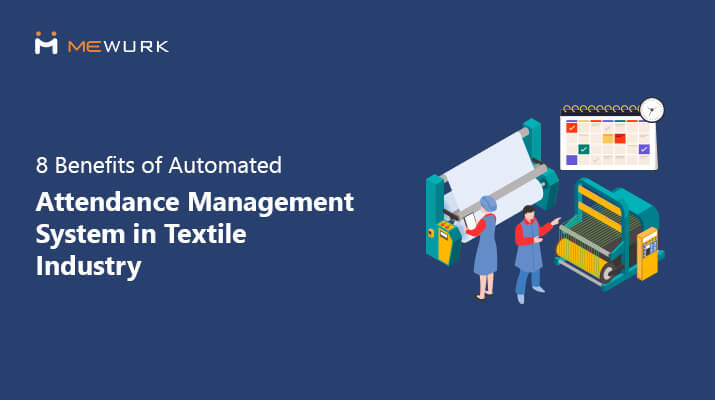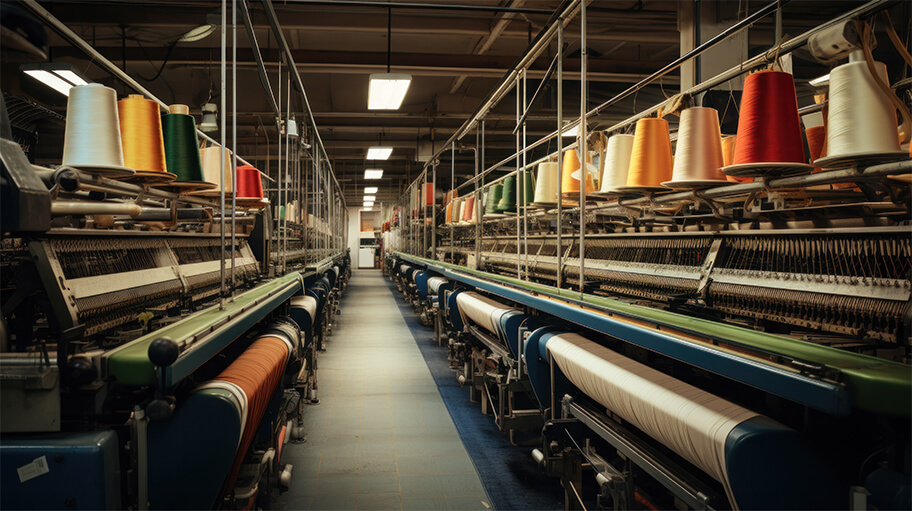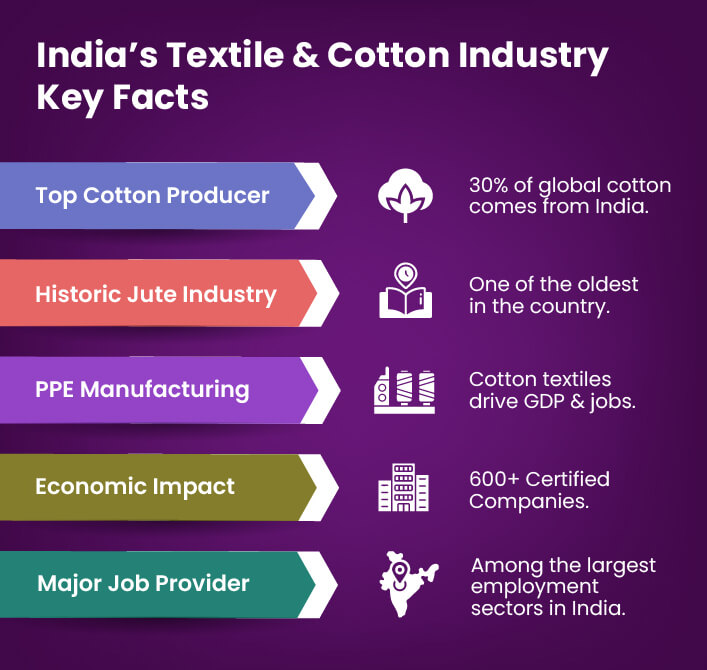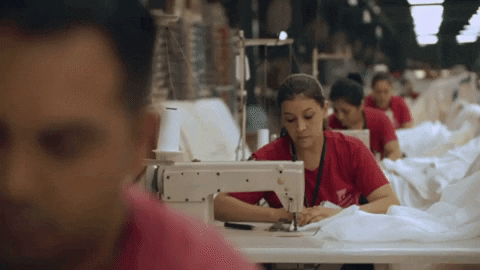
8 Benefits of Automated Attendance Management System in Textile Industry
Are you sure every worker in your textile factory is accounted for? In an industry where labour costs constitute up to 70% of operational expenses, precise time and attendance tracking of your employees is undeniably important in a textile business. Because every missed punch, inaccurate overtime calculation, or buddy-punching incident cuts into your profits.
Surprisingly, many textile business units still rely on outdated, error-prone attendance management system that leave room for time theft, payroll discrepancies, and compliance risks. The result? Low productivity, unhappy employees, and shrinking profits.
With all the demands of managing a textile business, the last thing you need is the added stress of keeping track of attendance. You've got production deadlines, a workforce to manage, and attendance records to keep. What if there was an easier way? Let's talk about a smarter solution - an automated attendance management system for the textile industry.
What Differentiates the Textile Business from Other Industries?

Before we talk about automated employee attendance management systems, let's first look at what makes the textile industry unique compared to others.
The textile industry is a fascinating mix of old and new methods — where skilled hands often work in tandem with high-tech machines. From handlooms to automated factories, it's a sector where you will see a blend of tradition with innovation.
The workforce includes artisans, machine operators, and sometimes seasonal workers. The demand for the workforce can fluctuate daily, often requiring complex shift patterns and a smart employee attendance management system that adapts to your company policies.
Key Facts About India's Textile and Cotton Industry
- India is the largest cotton-producing country in the world - 30% of global production.
- India's jute industry is among the oldest and most notable in the country.
- Cotton textiles are a key driver of India's GDP and employment.
- There are over 600 companies in India which are certified for PPE clothing production.
- The textile industry is one of the largest job providers in India.

Why Textile Businesses Need Automated Attendance Management System
The textile industry is the heartbeat of India's economy. It employs millions of workers across factories in all the major cities - urban hubs like Ahmedabad, Kolkata, and Mumbai - to quiet rural towns like Tiruppur, Bhilwara, and Panipat. From large-scale mills to small power loom clusters, where weaving, dyeing, and garment production take place.
India's global dominance in textiles relies heavily on its vast and skilled workforce. Keeping track of who's working and for how long is confusing without an automated attendance management system.
Eight Ways Textile Companies Benefit from Automated Attendance Management System
Here are eight ways that automating basic HR tools like attendance management systems can benefit business owners in the Indian textile and apparel industry:
Reduces Problems with Shift Changes
Even though machines handle a lot of work in textile factories, production can grind to a halt without skilled workers to operate the machinery. The unexpected illness of a key skilled worker would necessitate shift changes.
For record-keeping, the team leader might adjust these changes on the roster or in a spreadsheet. However, to ensure smooth shift transitions and avoid confusion, an automated attendance management system is essential. For instance, this system can automatically notify those affected by the shift change.
Tracks Multi-Factory Attendance Easily
If your business operates across multiple factories in different cities, you'll face a significant challenge at the end of each month when processing employee salaries. Accurate attendance data, specifically the number of days each employee was present, is crucial for payroll processing.
An automated online attendance system simplifies this process. From a central dashboard, the HR or payroll administrator can easily access this data. Furthermore, if the payroll system is integrated with the attendance management system, no separate data filtering is required.
Easily Manages Extra Workers in Busy Seasons
Textile processing plants often ramp up hiring during peak seasons. For example, from March to October, demand for cotton fabrics is high, and a loom house may need a large number of skilled employees for activities like weaving, knitting, spinning, and dyeing. During the rest of the year, the facility might only require staff for printing, stitching, and embroidery and packing.
This fluctuating workforce necessitates an automated attendance management system that can take the load off by integrating temporary workers into your attendance records.
Prevents Buddy Punching in Mills
Buddy punching—when one worker clocks in for another—is a common challenge HR personnel face in large garment manufacturing units where hundreds of employees work at a time. Automated employee attendance management systems with biometric scanners put a stop to this practice. Available in fingerprint and face recognition models, these machines make sure only the right person clocks in.
Calculates Extra Work Hours Correctly

Overtime is a big part of textile work. When a garment batch goes into production, the process doesn't always wrap up as planned. Delays in stitching, fabric finishing, or quality checks can push completion beyond the expected time. The extra hours that each employee puts in need to be accurately recorded, and they must be compensated for those hours. Most of the time, employee disputes or dissatisfaction arise when these extra hours are not properly documented and paid.
The company may not intentionally neglect to record employee overtime, but issues still occur. The root cause is often the lack of a reliable time and attendance management system that can accurately track these additional efforts. Without such a system, even the best intentions can fall short and lead to frustration and mistrust among employees.
Ensures Compliance with Government Work Rules
The textile industry operates under various business models—apparel production hubs, knitting facilities, dyeing and printing units, clothing workshops, and textile processing plants—each facing unique compliance challenges when it comes to labour laws.
For instance, in India, factory workers are protected under the Factories Act of 1948, which mandates that work shifts for each employee be limited to 8 hours per day and a maximum of 48 hours per workweek. If overtime is required, it must be restricted to no more than 2 hours per day. Ensuring adherence to these regulations is critical, as non-compliance can lead to legal penalties and employee dissatisfaction.
An automated employee attendance management system helps textile businesses overcome the challenge of maintaining accurate records of employee working hours, breaks, and overtime. It also generates detailed reports for audits, so the businesses can stay prepared for any unexpected compliance checks.
Improves Production Line Efficiency & Workforce Management
For textile factories in India, two big challenges are maintaining consistency for production line efficiency and large workforce management. A looming unity functioning with the help of five hundred people, a few people's tardiness or unchecked absenteeism can disrupt schedules and can cause delays to fabric batches.
An automated online attendance management system could help to deal with these challenges to a great extent by showing early signs of absenteeism, say by flagging absentee patterns early. By looking at such trends, managers can figure out how to adjust staffing, so that processes that cannot be put on hold like dyeing or weaving won't be affected.
As for effective workforce management of employees in a relatively larger unit, automation of employee time management could simplify several of the day-to-day challenges - be it shift tracking, overtime calculations or payroll.
Optimizes Payroll for Piece-Workers

Even though textile mill workers (especially in stitching units) are paid for each piece they make rather than the hours they work, the company still needs to track their time. This is to measure how well they work and how efficiently the factory runs.
The challenge is to measure both things - their output and their time - without having them conflict with each other. The solution is to use an online attendance management system that can track both the pieces made and the time spent, but in a way that doesn't interfere with the workers. This way, the company can measure both productivity and efficiency while still keeping the piece-rate payment system fair.
Summing Up…
In the textile industry, every minute and every worker matters. To keep productivity on track, businesses essentially need to minimise time and attendance tracking errors, absenteeism, and inefficient workforce management. With a smart employee attendance management system, they can easily monitor worker availability, improve scheduling, and hit their production goals without complications.
Are you still relying on outdated methods to track your workforce time and attendance, risking errors and inefficiencies? Upgrade your textile business with Mewurk's attendance management system today.
Most Popular Post

Why Accurate Attendance and Leave Management Matters for Business Growth?
Read More →Why Accurate Attendance and Leave Management Matters for Business Growth?
How To Leverage Attendance Data For Better Workforce Management?
Read More →How To Leverage Attendance Data For Better Workforce Management?




